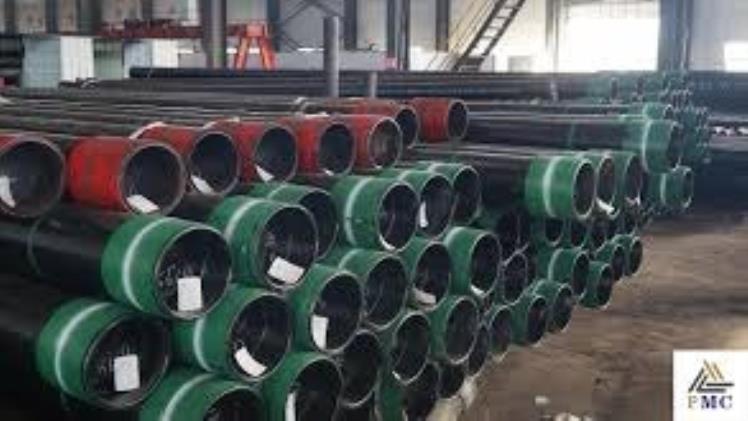
Oil Country Tubular Goods (OCTG) play a crucial role in the exploration and production of oil and gas. From drilling to thriving completion, OCTG products are essential in ensuring the integrity and efficiency of oil and gas wells. In this blog post, we will explore the world of Oil Country Tubular Goods, exploring their manufacturing processes and applications.
Understanding OCTG Manufacturing Processes
OCTG manufacturing involves several sophisticated processes optimized to meet specific size requirements. Continuous mandrel-rolling, push bench, and plug mill rolling methods are employed for different size ranges. The continuous mandrel-rolling and push bench processes are utilized for sizes between 21 and 178 mm OD, while plug mill rolling is employed for sizes between 140 and 406 mm OD.
However. for larger sizes between 250 and 660 mm OD, cross-roll piercing and pilger rolling are implemented. Unlike welded pipes, these manufacturing processes do not permit thermomechanical processing, necessitating high-strength seamless pipes.
Key Components of OCTG
- Casing: Safeguards the wellbore, prevents collapse of formations, and maintains fluid isolation during drilling and production.
- Tubing: Aids in transporting oil and gas from the reservoir to the surface and offering structural support for downhole equipment.
- Drill Pipes: Transmit boring fluid and torque to the drill bit, facilitating the drilling process.
- Line Pipes: Link production facilities to processing plants and distribution networks, enabling the transportation of hydrocarbons.
Applications of OCTG in the Oil and Gas Industry
In the dynamic world of oil and gas exploration and production, OCTG pipes are indispensable tools, facilitating various activities vital to the industry’s functioning. Let’s delve into how these pipes assist oil and gas companies across multiple fronts:
- Facilitating Well Drilling: OCTG pipes, serving as drill pipes, casing, and tubing, are instrumental in boring operations. They aid in penetrating underground layers, lining well walls, and facilitating the flow of oil or gas to the surface, marking a pivotal step in resource exploration and exploitation.
- Ensuring Well Protection: Casing pipes play a pivotal role in safeguarding well integrity and shielding against mechanical damage, leaks, and unwanted infiltration. This ensures the longevity and safety of the well, which is critical for sustained operations.
- Supporting Oil and Gas Production: Tubing pipes serve as conduits for transporting oil or gas from the well to the surface. They facilitate production, transportation, and distribution to processing and transportation facilities.
- Enhancing Production Efficiency: OCTG pipes play a crucial role in water or gas injection operations. They aid in directing injected substances into underground rock layers, stimulating oil production and enhancing operational efficiency.
- Enabling Pipeline Infrastructure: OCTG pipes form the backbone of pipeline networks. They facilitate the seamless oil and gas transportation from drilling sites to processing or distribution facilities, bridging the gap between production and consumption.
- Ensuring Safety and Quality Compliance: Rigorous adherence to technical specifications, including strength, pressure resistance, and durability, is imperative for OCTG pipes. Their quality and reliability are paramount in maintaining operational integrity and adherence to safety standards.
- Empowering Distribution Networks: OCTG pipes are integral to the distribution and transportation systems of various petroleum products, including natural gas, gasoline, and diesel. They ensure a smooth flow to end consumers.
- Driving Efficiency and Cost Savings: Oil and gas companies benefit from enhanced operational efficiency and reduced costs by employing high-quality OCTG pipes. This helps mitigate the risk of production disruptions and maximizes profitability.
Does OCTG Use Solely Apply to Oil and Gas?
While OCTG pipes are primarily associated with the oil and gas industry due to their crucial role in drilling, production, and transportation activities, their utility extends beyond this sector. These pipes find applications in various industries requiring durable, corrosion-resistant piping solutions, including construction, mining, and infrastructure development.
In construction, OCTG pipes are utilized for foundation pilings and structural supports in high-rise buildings. In mining, they serve in shaft lining and ground stabilization efforts. Moreover, OCTG pipes are also employed in geothermal energy extraction, where their heat-resistant properties make them ideal for harnessing underground heat.
Thus, while originating from the oil and gas domain, OCTG pipes have diversified applications. They showcase their versatility and adaptability across different sectors.
Conclusion
Oil Country Tubular Goods (OCTG) are indispensable assets in the oil and gas industry’s exploration, drilling, and production processes. Their diverse applications, ranging from facilitating drilling operations to supporting pipeline infrastructure, underscore their vital role in the functioning of the industry.
Through rigorous manufacturing processes and adherence to strict quality standards, OCTG pipes ensure operational integrity, safety, and efficiency in oil and gas operations. They are essential for maintaining the integrity and safety of oil and gas operations.
As the backbone of critical infrastructure, OCTG pipes play a pivotal role in shaping the global energy landscape, driving efficiency, and enabling sustainable resource exploitation. If you need further information about OCTG and its applications, it’s advisable to contact a professional piping company specializing in oil and gas solutions.




